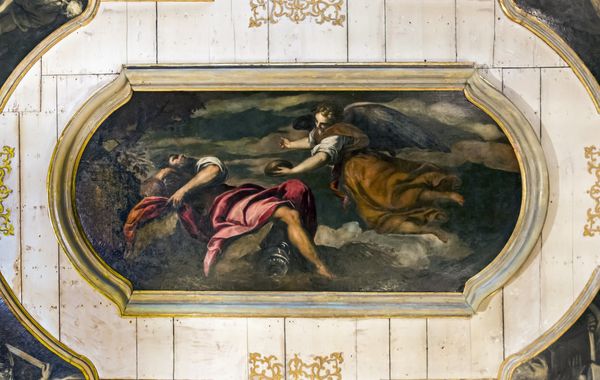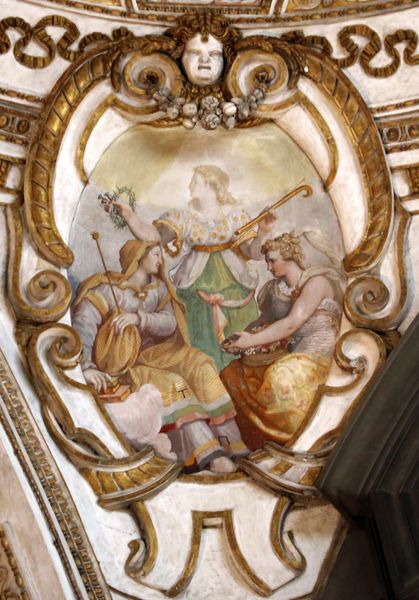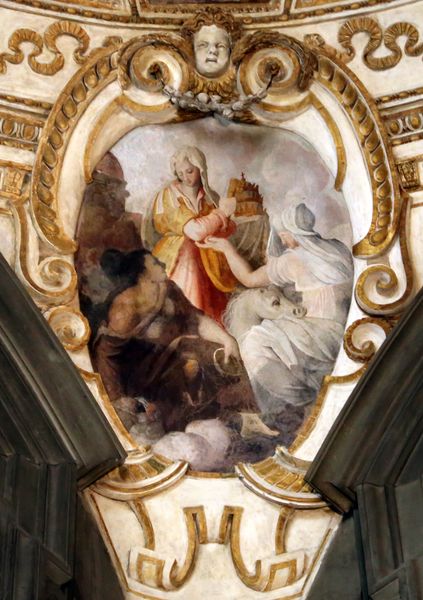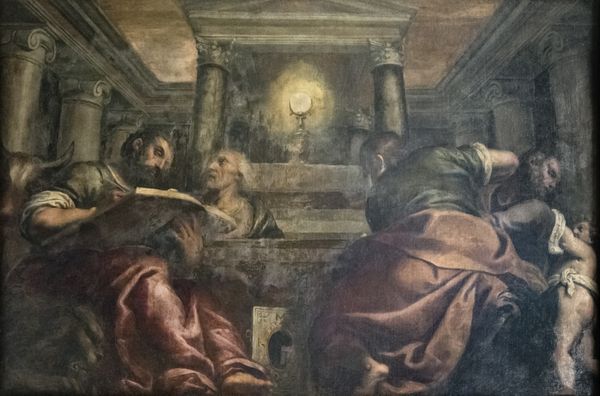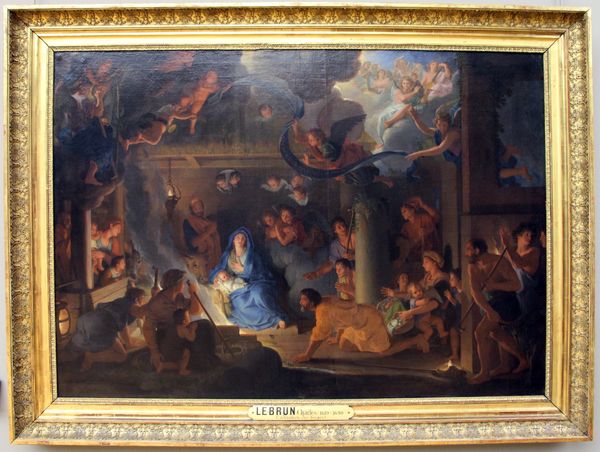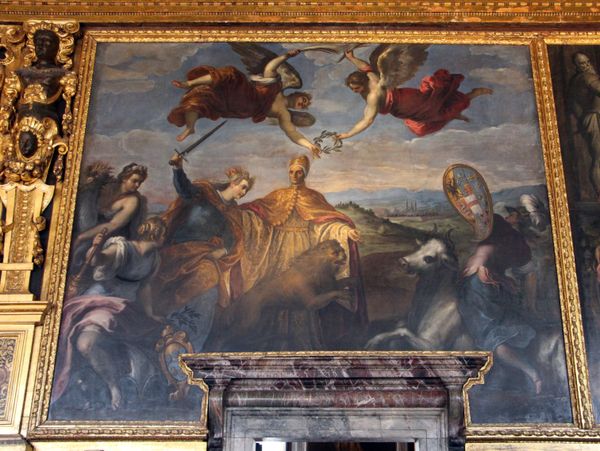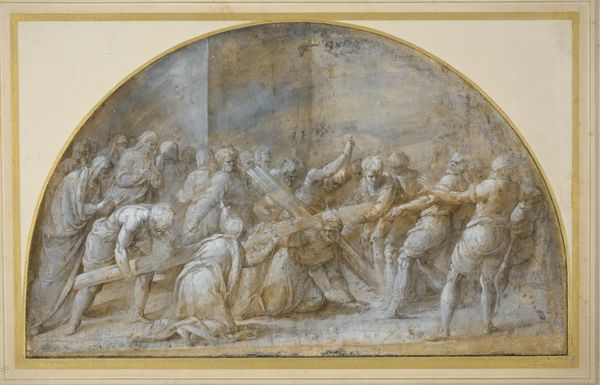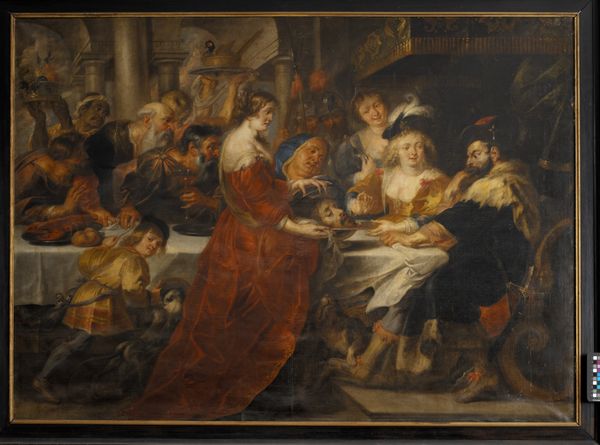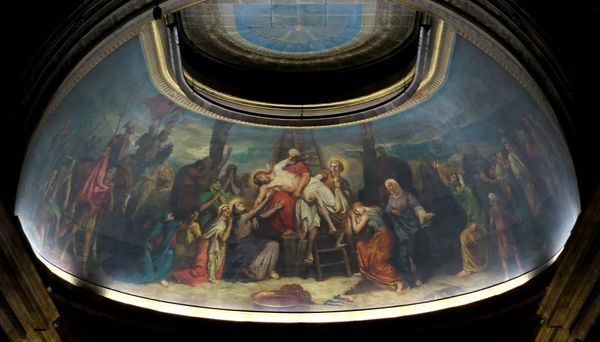
David riceve dal sacerdote Achimelec i pani offerti nel santuario 1593
0:00
0:00
palmailgiovane
I Gesuiti (Church of Santa Maria Assunta), Venice, Italy
tempera, painting, photography
#
narrative-art
#
tempera
#
painting
#
sculpture
#
figuration
#
traditional architecture
#
photography
#
earthy tone
#
underpainting
#
genre-painting
#
history-painting
#
academic-art
#
italian-renaissance
#
brown colour palette
Copyright: Public domain
Curator: Palma il Giovane's "David Receives from the Priest Ahimelech the Unleavened Bread from the Sanctuary," created in 1593, is a narrative painting that captures a poignant moment of refuge and survival. Editor: The whole scene is dipped in earthy tones, but there's this striking red robe that David's wearing, as if to suggest something's about to spill... blood, perhaps? I immediately feel like something is not quite right with the composition. It’s intriguing, yet also a tad unsettling. Curator: It absolutely should feel that way! Consider the historical context: David, fleeing from Saul, seeks help from Ahimelech, the priest of Nob. The act of receiving the sacred bread, normally reserved for priests, highlights themes of desperation, divine exception, and the blurring of secular and sacred boundaries. We can read David’s flight as a critique against unjust power. Editor: It's as if the painting hints at something being amiss within the power structures of its own time, not just depicting ancient strife, but also mirroring 16th-century societal conflicts through color and symbolism. Do you feel the light and shadow is dramatic, or sort of heavy handed? Curator: I see what you mean by “heavy-handedness”, however, think about it as creating both drama and, allegorically, darkness encroaching on David’s world, yes, but equally important in emphasizing the tension between David’s actions of desperation and the sacred nature of the sanctuary and its objects. The darks and lights become then, if you like, “players” in a game of shadows cast by those actions. Editor: Mmm, yes I see it now; perhaps less clumsy, more allegorical, really mirroring that tense relationship you’re highlighting between divine law and the mortal realm, so I should rephrase, less 'heavy handed', more purposeful use of the colour scheme, I feel. Looking closely at David, he embodies conflict—a mixture of defiance and utter humility. And if that's true in David himself, then he in a way personifies that boundary we've been speaking about. It's quite complex, isn't it? Curator: And there's where, I feel, its lasting impact resides – in how it compels us to question the systems and actions we take for granted, it's really interesting isn’t it? Editor: I hadn't really focused on narrative painting until this discussion, it always felt somewhat predictable and uninspired for me but it seems, after some decoding, a new dimension opens up! It is much more challenging than what appears on the surface. Thank you!
Comments
No comments
Be the first to comment and join the conversation on the ultimate creative platform.
